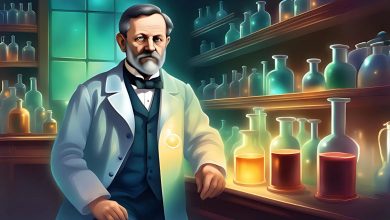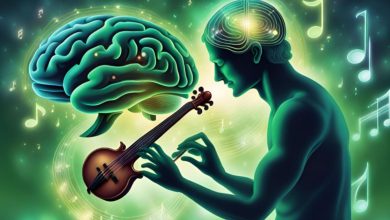Lucid Dream: Trying to Manage the Dream When You Realize That You Are In One

Have you ever realized that you are dreaming while you are dreaming? If you haven’t experienced it before, this may seem impossible at first. But the number of people who really understand that they are dreaming and even manage it is not few. According to Saunders’ research in 2016, 55% of adults have experienced this condition at least once. In addition, 23% of the people who participated in the research stated that they had Lucid dreams regularly (once a month or more). So let’s take a look at this thing of being both awake and asleep!
Like a Dream But Real!
Lucid Dream is the name given to the state of realizing that one is dreaming while in a dream. During this experience, the person can manipulate his/her dream, go wherever he or she wants, break the laws of physics and even create the character he or she wants. However, even if the person does not, the fact that the person realizes that he or she is in a dream is enough for us to consider that dream as a Lucid Dream. Why and how Lucid Dream happens has been tried to be clarified with intense research for a while. However, although we have strong research results, there is no conclusion that we can say for sure.

The concept of the Lucid Dream was coined by psychiatrist Frederik van Eeden. This concept was first mentioned in Eeden’s 1913 study on dreams called “a Study of Dreams”. This work includes the scientist’s own experiences. Eeden recorded all his dreams between 1898 and 1912 in his dream diary. After almost 15 years of experience, he said that all dreams can be classified into seven basic categories:
- Initial dreams
- Pathological dreams
- Ordinary dreams
- Vivid dreams
- Demonic dreams
- General dream sensations
- Lucid dreams
The word “Lucid” means “clear“. Eeden, as a result of his research, said that Lucid Dream is the most interesting and research-worthy type of dream.
Steps of Dreams
While we sleep, our brain goes through several stages. These phases are in a cycle and repeat about every 90 minutes. We can divide these sleep stages into two basic categories as non-REM (NREM) and REM stages. The Non-REM category is divided into four different categories.
NREM 1: This is the first stage when we fall asleep. It is a light sleep state and we can easily wake up when we are in this stage. It takes 5-10 minutes.
NREM 2: In the second stage, our eye movements, heart rate, and brain waves slow down and our body temperature starts to drop. It takes about 20 minutes.
NREM 3 and 4: In these stages, which occur before the REM stage, we go into a deep sleep. Our muscles and tissues begin to heal. It is not easy to wake up at this stage, and if we do, the process of sobriety will be difficult. It takes about 30 minutes on average.

REM: This is the phase when we were losing our religion to sleep and start to dream (!) In this phase, which is the last part of the cycle, our breathing accelerates. Our brain becomes more active and our eye movements speed up. Our body relaxes and stops moving. And most importantly, we dream during this phase.
It is thought that Lucid Dreams also occur in the REM phase. Many studies are still ongoing to elucidate this issue. People who want to observe the Lucid Dream experience try to interfere with sleep by artificial means. Let’s examine Lucid Dream techniques now!
Lucid Dreaming Methods
Lucid Dream can also happen spontaneously, without any external factor. However, for Lucid Dream studies, this situation is very unpredictable. Therefore, they have tried to induce people to have Lucid Dreams through various methods.
Reality Test: This test is based on constantly questioning whether the person is in a dream. The person who constantly questions this situation during the day, questions this situation when they dream, and finally, they come to the level of being conscious by repeating this situation in their dreams. We can think of this test as the spinning test in the movie Inception.

Image Source: Business Insider
Mnemonic Induction of Lucid Dreams (MILD): This method is based on training oneself to distinguish between dream and reality. The subject is awakened after five hours of sleep. When they wake up, they repeat, “Next time I go to sleep, I will remember that I was dreaming!” themed sentences. Then they fall asleep again and warn themselves, hoping that what they just said will come true.
Wake Back to Bed (WBTB): This test is often used in conjunction with the previous test (MILD). In order to trigger lucid dreams, people wake up in the middle of the night and stay awake for a while. According to the results of the research, the best time for lucid dreaming is to go back to sleep 30 to 120 minutes after waking up. It is predicted that it will be more successful when applied together with the MILD test.

External Stimulus Test: This method, as the name suggests, aims to perform lucid dreaming with external stimuli. These external stimuli must be active during the REM phase of the sleeper. For example, a different flashing lamp known to be preset, or a different sound than normal can trigger this. Since the subject in the REM stage adjusts this stimulus while conscious, when they perceive it in their dream, they begin to understand that they are actually in a dream.
Apart from these, there are also studies aiming to trigger lucid dreaming with various devices, drugs, and supplements.
Cure for Nightmares: Lucid Dream
Being able to realize that you are in a dream is not enough to manage it. According to a recent study conducted by Soffer-Dudek in 2020, it is possible to manage only one of every three Lucid Dream experiences. However, many people who realized that they are in a dream state can end the dream and wake up easily.
Being able to wake up with the realization that you are in a dream is gold, especially for nightmares. In addition, it is thought that self-confidence and the feeling of freedom from being able to control the dream reduce the problem of anxiety.
Moreover, there are studies showing that performing Lucid Dreaming improves people’s motor skills, problem-solving ability, and creativity.
The Dangerous Effect of Getting Away from The Truth
There is another side to the coin. Just because Lucid Dream has created a rosy world where you’re in total control doesn’t mean it’s anything but perfect. Studies show that Lucid Dreams can seriously reduce sleep quality. In other words, it is quite possible that a tired morning awaits you when Lucid Dream happens.

The more dangerous aspect of the matter is that Lucid Dream distracts us from reality. The perception of reality of people lost in an abstract world may become blurred. In particular, people with psychological disorders or going through difficult periods may find it difficult to see the line between reality and fantasy. This can become dangerous in the later stages, up to the level of hallucinations, confusion, or even insanity.
References and Further Readings
Aspy, D. J. (1AD, January 1). Findings from the international lucid dream induction study. Frontiers. https://www.frontiersin.org/articles/10.3389/fpsyg.2020.01746/full.
Lucid dreams: Definition, techniques, and benefits. Sleep Foundation. (2020, October 30). https://www.sleepfoundation.org/dreams/lucid-dreams.
Martins, K. (n.d.). Lucid dreams: DEFINITION, Benefits, Dangers, how to do it. WebMD. https://www.webmd.com/sleep-disorders/lucid-dreams-overview.
Wikimedia Foundation. (2021, July 24). Lucid dream. Wikipedia, the free encyclopedia. https://en.wikipedia.org/wiki/Lucid_dream.
Images not cited are used through Canva Pro with a royalty payment.
The proofreading has been done by Asu Pelin Akköse and Mete Esencan.
Would you like to support us?
- For more detailed information, you can check our “Support Us!” page!







